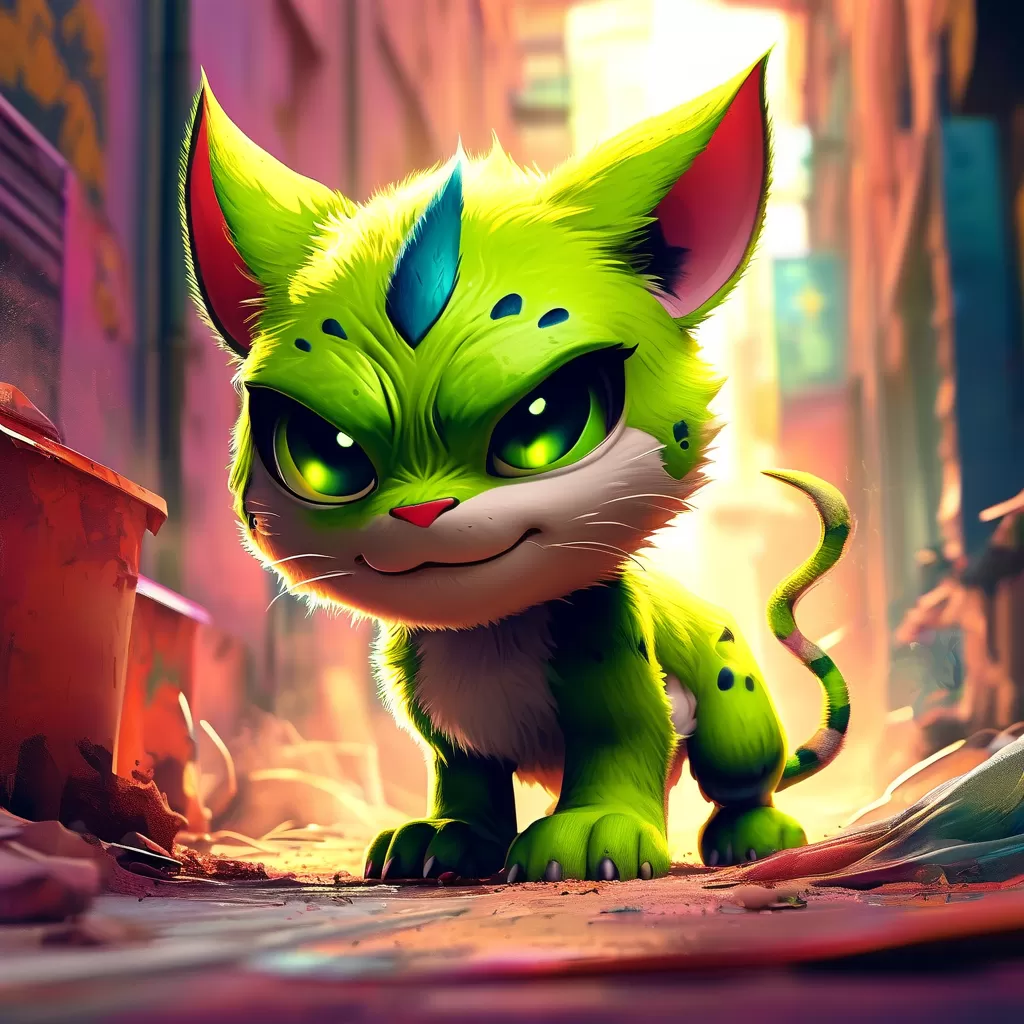Feedback Ben 10: His Rise, Fall, and Enduring Legacy in the Ongoing Battle
Launched into the vibrant, sometimes chaotic, world of Ben 10: Alien Force, Feedback burst onto the scene as a playable alien character, offering a unique twist on the typical transformation mechanic. While other aliens often required specific conditions or cooldown periods, Feedback presented a different challenge: his activation was tied to Ben’s emotional state, specifically moments of anger or frustration. This article delves into the origins, characteristics, and gameplay role of Feedback, exploring his rise as a popular choice, his limitations leading to his “fall” in terms of mainstream attention within the game, and the reasons why his legacy persists, keeping him relevant in the ongoing battle of Ben 10 fandom.
The Genesis of Feedback: An Alien Born of Fury
Feedback first appeared in the Ben 10 universe within the video game *Ben 10: Alien Force*, released in 2010 for various platforms, including the Nintendo DS and 3DS alongside other titles. Unlike many other aliens introduced in the TV series or subsequent media, Feedback wasn’t part of the core narrative initially but rather a character specifically designed for gameplay integration.
The concept behind Feedback was intriguing. He was presented as an alien manifestation of negative emotions, specifically anger. The visual design, crafted by artists at Man of Action (the creators behind the *Ben 10* franchise), reflected this theme. Feedback is depicted as a lanky, bipedal alien with a distinctly unsettling appearance. His most striking feature is a single eye, a deep shade of green, possessing a dark green, vertical pupil. This asymmetrical eye adds to his alien and somewhat menacing aura.
The rest of his body is covered in a textured, mottled green and black skin, reminiscent of bark or rough foliage, reinforcing the connection to primal, raw emotions. Most notably, Feedback possesses two long, thin tentacles extending from his back, resembling wires or cables. These tentacles are not just decorative; they are central to his power and function. They crackle with visible energy, conveying a sense of volatile power and instability. This visual design immediately sets Feedback apart from other more streamlined or heroic-looking aliens like Heatblast or Diamondoid.
The name itself, “Feedback,” is a direct reference to the intense, often overwhelming emotional outburst the alien represents. It’s a term often associated with negative consequences or loops, fitting his nature perfectly.
The Gameplay Experience: Versatility and a Costly Power
Within the *Ben 10* game ecosystem, Feedback quickly carved out a niche due to his unique abilities and gameplay style. His primary power revolves around energy manipulation and rapid movement, facilitated by his tentacles.
Feedback’s most visually spectacular ability is his energy discharge. By charging up his tentacles, Ben can unleash bolts of green energy in various directions. These attacks are rapid and can be used for both offense and defense, creating emitters that can damage enemies or block incoming attacks. The tentacles themselves can be used offensively, capable of striking opponents or extending to reach high platforms or obstacles.
One of Feedback’s most significant strengths is his speed and agility. He is often considered one of the fastest playable aliens in the games he appears in. This speed allows him to quickly close the distance to enemies, dodge attacks, and reposition rapidly during combat. Combined with his versatile energy weapons, this makes Feedback a formidable opponent in direct confrontations.
However, Feedback’s power comes with a significant cost. As his name and nature suggest, Feedback is intrinsically linked to Ben’s anger. The activation of Feedback requires Ben to be in an agitated state, often depicted through dialogue prompts within the game. Furthermore, maintaining the Feedback form or using its abilities can amplify Ben’s negative emotions, potentially leading to detrimental side effects if prolonged or used excessively. www.kroger.com Feedback: Earn Rewards & Influence Your Local Market!
The *Ben 10* wiki and community forums frequently highlight Feedback’s versatility. Users often praise him for his adaptability in various situations. His speed allows him to handle multiple enemies, while his energy attacks offer different tactical options. This versatility meant players could find ways to use Feedback effectively even in situations where other aliens might struggle. Many felt he could easily replace several other aliens whose functions were more niche or required longer activation times. He wasn’t necessarily superior to everyone, but his combination of speed, ranged attacks, and defensive capabilities made him a go-to choice for many players seeking a quick and effective way to deal damage.
His availability was also a factor. While Feedback could be played by Ben on the Nintendo DS and 3DS, referencing the 16-year-old version of Ben, he was also playable by the 11-year-old Ben on certain console versions of the game. This wider availability across different platforms potentially increased his user base compared to some other aliens who were locked behind specific versions or platforms.
The Decline and Enduring Echo: Legacy in the Shadows
Despite his initial popularity and unique appeal, Feedback’s prominence within the *Ben 10* franchise, particularly in the game space, began to wane after the peak of *Alien Force*. Several factors contributed to this “fall”:
Firstly, the release of *Ben 10: Omniverse* introduced a new generation of aliens and gameplay mechanics, shifting the focus away from the older game series. Newer titles often prioritized the latest animated series’ characters, relegating characters from *Alien Force* like Feedback to supporting or less frequently featured roles. Amplifying Feedback: The Hidden Leverage Driving Change Kroger Feedback Survey: Share Your Thoughts & Earn Rewards!
Secondly, while Feedback had unique mechanics, the core gameplay loop of *Alien Force* became repetitive for some players over time. As newer, more powerful aliens were introduced or became available, players often gravitated towards those offering more raw power or unique abilities suited to boss fights, feeling that Feedback, while versatile, wasn’t always the top choice for overwhelming force.
Thirdly, the narrative focus shifted towards the main storylines in the TV series and newer media, meaning Feedback rarely received significant character development or integration into overarching plots outside the initial game appearances and fan theories. This lack of narrative reinforcement meant he didn’t achieve the same cultural cachet as characters like Gwen or Kevin.
Yet, paradoxically, it is this very “fall” from mainstream spotlight within the official game titles that has contributed to Feedback’s enduring legacy. He became a fixture in the *Alien Force* fan community, often discussed in compilations, retrospectives, and fan theories. His unique origin tied to anger, his visually distinct appearance, and his perceived versatility resonated with a dedicated group of fans. YouTube compilations showcasing Feedback’s most devastating attacks or fastest sequences often garnered views, keeping his name alive.
The commentary section snippet references “[compilation]” content involving Feedback, hinting at the community’s continued interest in his abilities. Fan discussions often delve into hypothetical matchups, debating his effectiveness against other aliens, and exploring the lore implications of his existence as an embodiment of negative emotion.
Feedback’s legacy is one of unique design and memorable gameplay integration. He wasn’t a flashy alien like Heatblast or a powerhouse like Aggregor (early versions). Instead, he offered speed, ranged combat, and a raw, untamed power tied to emotion. He represented a different facet of Ben’s alien arsenal – the darker, more volatile side. While perhaps not the most popular choice in the peak of the game’s popularity, his distinctiveness ensured he remained a recognizable and often beloved character for the dedicated Ben 10 fanbase. He may not be constantly featured in modern promotional material, but Feedback’s echo continues to resonate within the vast, ongoing battle of Ben 10 fandom.
The Enduring Appeal: More Than Just a Game Character
Feedback’s lasting impact stems from several key factors beyond his initial game appearance. His design is memorable and distinct, easily recognizable even to casual observers of the franchise. The combination of his lanky form, single eye, and crackling tentacles creates a unique visual identity that stands out among the more humanoid or insectoid aliens.
The concept of an alien tied directly to a specific emotion, particularly anger, adds a psychological layer often absent in other characters. It taps into universal human experiences and emotions, making him more relatable, albeit in a twisted, alien way. This narrative potential, even if not fully explored in the official lore, allows fans to project their own interpretations and stories onto him.
Furthermore, his gameplay integration demonstrated a creative approach to alien abilities within the *Ben 10* game formula. Instead of simply offering a stronger version of an existing power, Feedback introduced a mechanic based on emotion and a unique visual flair tied to his tentacles. This innovation, even if niche, showcased the potential diversity of the alien roster.
His perceived versatility also played a crucial role. Players appreciated having an option that wasn’t just about brute force or a single powerful attack. Feedback offered speed, ranged combat, and defensive capabilities, making him adaptable to various enemy types and situations within the games. This practical utility ensured he remained a valuable tool for players even as newer aliens were introduced.
Finally, the dedicated fanbase is instrumental in preserving Feedback’s legacy. Online forums, fan wikis, YouTube compilations, and discussions keep his name alive. The snippet mentioning “[compilation]” content reinforces this; fans actively seek



